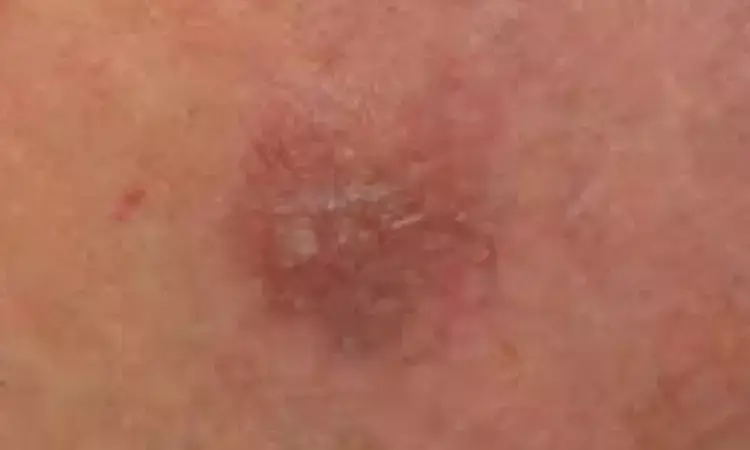- Home
- Medical news & Guidelines
- Anesthesiology
- Cardiology and CTVS
- Critical Care
- Dentistry
- Dermatology
- Diabetes and Endocrinology
- ENT
- Gastroenterology
- Medicine
- Nephrology
- Neurology
- Obstretics-Gynaecology
- Oncology
- Ophthalmology
- Orthopaedics
- Pediatrics-Neonatology
- Psychiatry
- Pulmonology
- Radiology
- Surgery
- Urology
- Laboratory Medicine
- Diet
- Nursing
- Paramedical
- Physiotherapy
- Health news
- Fact Check
- Bone Health Fact Check
- Brain Health Fact Check
- Cancer Related Fact Check
- Child Care Fact Check
- Dental and oral health fact check
- Diabetes and metabolic health fact check
- Diet and Nutrition Fact Check
- Eye and ENT Care Fact Check
- Fitness fact check
- Gut health fact check
- Heart health fact check
- Kidney health fact check
- Medical education fact check
- Men's health fact check
- Respiratory fact check
- Skin and hair care fact check
- Vaccine and Immunization fact check
- Women's health fact check
- AYUSH
- State News
- Andaman and Nicobar Islands
- Andhra Pradesh
- Arunachal Pradesh
- Assam
- Bihar
- Chandigarh
- Chattisgarh
- Dadra and Nagar Haveli
- Daman and Diu
- Delhi
- Goa
- Gujarat
- Haryana
- Himachal Pradesh
- Jammu & Kashmir
- Jharkhand
- Karnataka
- Kerala
- Ladakh
- Lakshadweep
- Madhya Pradesh
- Maharashtra
- Manipur
- Meghalaya
- Mizoram
- Nagaland
- Odisha
- Puducherry
- Punjab
- Rajasthan
- Sikkim
- Tamil Nadu
- Telangana
- Tripura
- Uttar Pradesh
- Uttrakhand
- West Bengal
- Medical Education
- Industry
Minocycline Shows Promising for Treating Rare Skin Condition Granuloma Faciale: Case report

China: Granuloma faciale (GF) is a rare and chronic skin disorder characterized by reddish-brown or purplish-red nodules and plaques, often found on the face. The exact cause of GF remains unclear, making treatment challenging. However, a recent case report published in Clinical, Cosmetic And Investigational Dermatology by Liu L and colleagues suggests that minocycline, an antibiotic with anti-inflammatory properties, could be a promising solution for this rare condition.
GF is a skin condition that primarily affects the face, although it can sometimes occur in other areas of the body. It progresses slowly and can persist for an extended period, posing a risk of disfigurement. Current treatment options for GF include corticosteroids, topical calcineurin inhibitors, hydroxychloroquine, clofazimine, and more. However, individual responses to these treatments vary, and some patients do not respond well.
In this case report, a 61-year-old male patient presented with a red plaque on his left cheek, which had been present for two months. Initially, it appeared as a red papule and gradually developed into a plaque with scattered red papules at the edges. Despite previous treatment attempts with tacrolimus and glucocorticoid drugs, the patient's condition showed little improvement.
A skin biopsy confirmed the diagnosis of GF, revealing characteristic features such as leukocytoclastic vasculitis and mixed inflammatory cell infiltration around blood vessels in the dermis. Importantly, there was a notable presence of neutrophils, lymphocytes, and eosinophils, indicating an inflammatory response.
Given the patient's poor response to previous treatments and the significant infiltration of neutrophils, the medical team decided to try oral minocycline (100mg twice a day). After just three weeks of treatment, there was a significant improvement in the plaque's appearance, with a reduction in inflammation.
Minocycline is an antibiotic with known anti-inflammatory properties. It works by inhibiting various immune cells and reducing the migration of neutrophils (a type of white blood cell) to inflamed tissues. This mechanism of action aligns with the characteristics of GF, which involves inflammation and neutrophil infiltration.
While this case report shows promising results with minocycline treatment for GF, it is essential to note that more research and larger studies are needed to confirm its effectiveness. Due to the rarity of GF, treatment experiences primarily come from case reports and case series. Long-term follow-up of patients is also necessary to assess the therapy's long-term efficacy.
In conclusion, minocycline demonstrates potential as a treatment option for granuloma faciale, offering hope to individuals struggling with this challenging skin condition. Further research and clinical studies will help establish minocycline's role in the management of GF.
Reference:
Liu, L., He, Y., & Chang, J. (2023). A case of granuloma faciale successfully treated with minocycline. Clinical, Cosmetic and Investigational Dermatology, 16, 2337–2339. https://doi.org/10.2147/ccid.s425239
Dr Kamal Kant Kohli-MBBS, DTCD- a chest specialist with more than 30 years of practice and a flair for writing clinical articles, Dr Kamal Kant Kohli joined Medical Dialogues as a Chief Editor of Medical News. Besides writing articles, as an editor, he proofreads and verifies all the medical content published on Medical Dialogues including those coming from journals, studies,medical conferences,guidelines etc. Email: drkohli@medicaldialogues.in. Contact no. 011-43720751


